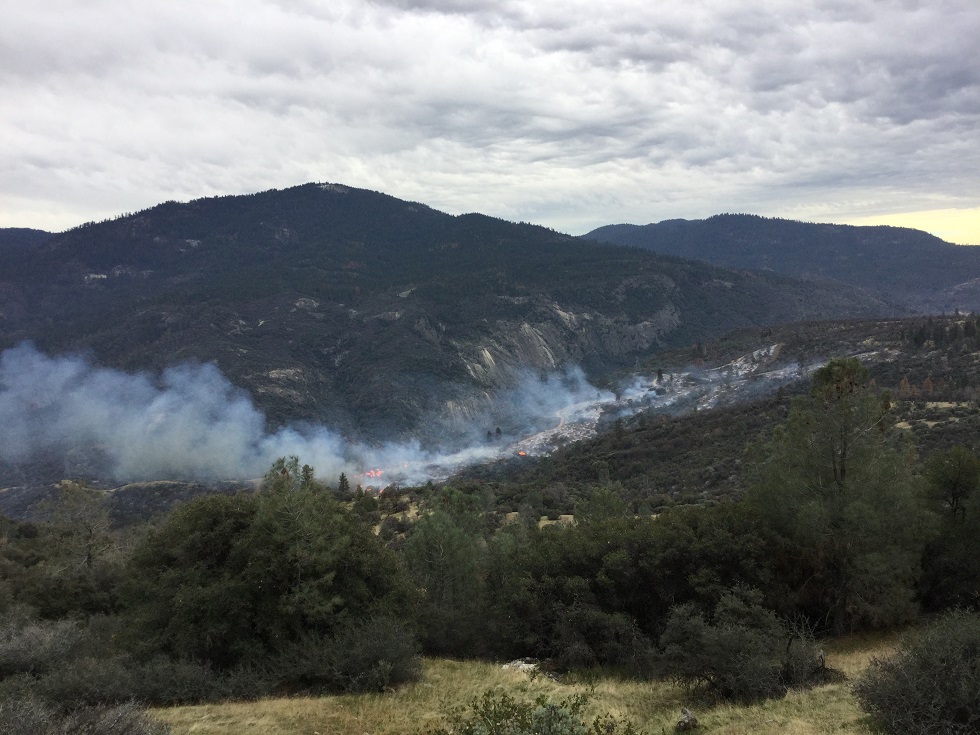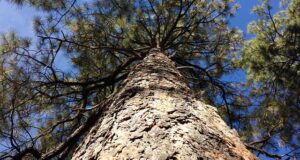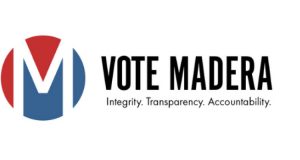NORTH FORK – A prescribed burn of over 60 acres near Kinsman Flats has been successfully completed, accomplishing the goals of reducing fuels near homes in the area, and improving habitat for wildlife.
The Sierra National Forest, Bass Lake Ranger District, Fuels and Fire Management staff, ignited the burns on Thursday, Feb. 5 and Friday, Feb. 6, on the Source Kinsman Fuels Project.
The primary objectives of this project are hazardous fuels reduction, wildlife habitat improvement and preservation and enhancement of cultural and ecological resources.
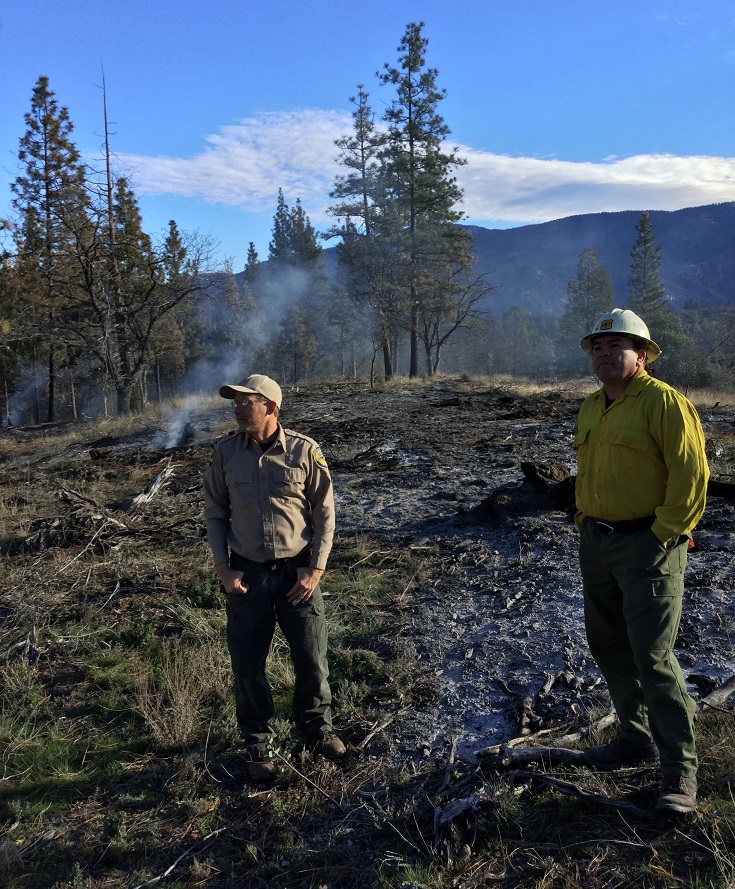 Grant funding from the National Wild Turkey Federation and California Deer Association made implementation of this project possible. Additional assistance was provided by the Madera-Mariposa-Merced, Fresno-Kings and Tulare Cal Fire Units, who helped prepare for this burn by providing dozers for crushing the 30-plus-year-old chaparral fuels within the project area.
Grant funding from the National Wild Turkey Federation and California Deer Association made implementation of this project possible. Additional assistance was provided by the Madera-Mariposa-Merced, Fresno-Kings and Tulare Cal Fire Units, who helped prepare for this burn by providing dozers for crushing the 30-plus-year-old chaparral fuels within the project area.
This coordination between Burt Stalter, Bass Lake Ranger District Fuels Specialist, and Jeff McCarrol, Cal Fire Training Battalion Chief, provided a training opportunity while also completing important work on the ground.
The project is adjacent to communities and residences in the Kinsman Flat and Lions Point area, which is located approximately 9 miles east of North Fork along the Mammoth Pool Road (Forest Service 81).
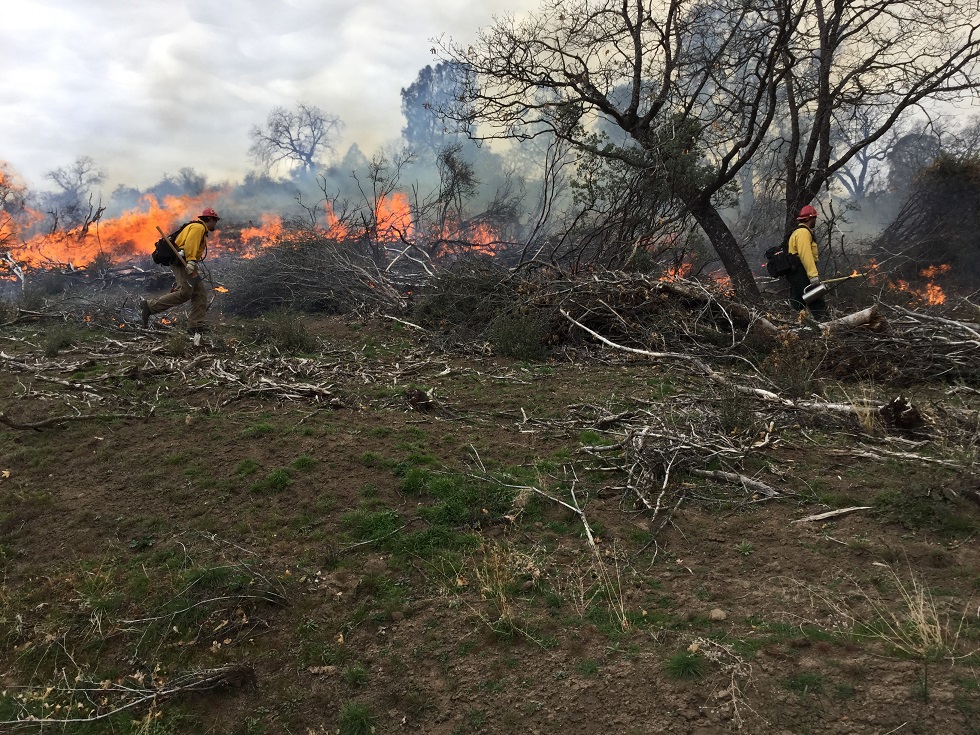 The project also borders a Cal Fire Vegetation Management Project adjacent to the California Department of Fish and Wildlife (CDFW) Refuge at Kinsman Flat. CDFW Madera Unit Biologist Tim Kroeker visited the project last Saturday with Dan Fidler, Fresno Unit Biologist, and reiterated that the burning “promotes herbaceous plant growth of grasses and forbs and these have a higher nutritional value.”
The project also borders a Cal Fire Vegetation Management Project adjacent to the California Department of Fish and Wildlife (CDFW) Refuge at Kinsman Flat. CDFW Madera Unit Biologist Tim Kroeker visited the project last Saturday with Dan Fidler, Fresno Unit Biologist, and reiterated that the burning “promotes herbaceous plant growth of grasses and forbs and these have a higher nutritional value.”
Key objectives of the project are to reduce the existing wildland fire hazard to these nearby communities and residences by reducing and managing existing fuel loads in live and dead fuels to aid the protection of private property, and help reduce wildfire behavior, making them easier to suppress. The burning is also intended to stimulate and increase the quantity of browse and improve existing habitat for wildlife species, in particular wild turkeys and mule deer.
Conditions were good and operations went smoothly under the command of Burn Boss Mike Fralicks and Firing Boss Mark Smith, both veteran firefighters, whose experience no doubt allowed trainees Robert Moreno, Burn Boss Trainee and Shaun Nau, Firing Boss Trainee, to learn to get more comfortable with flame lengths under this prescribed fire, comparable to what is seen in some wildfire situations.
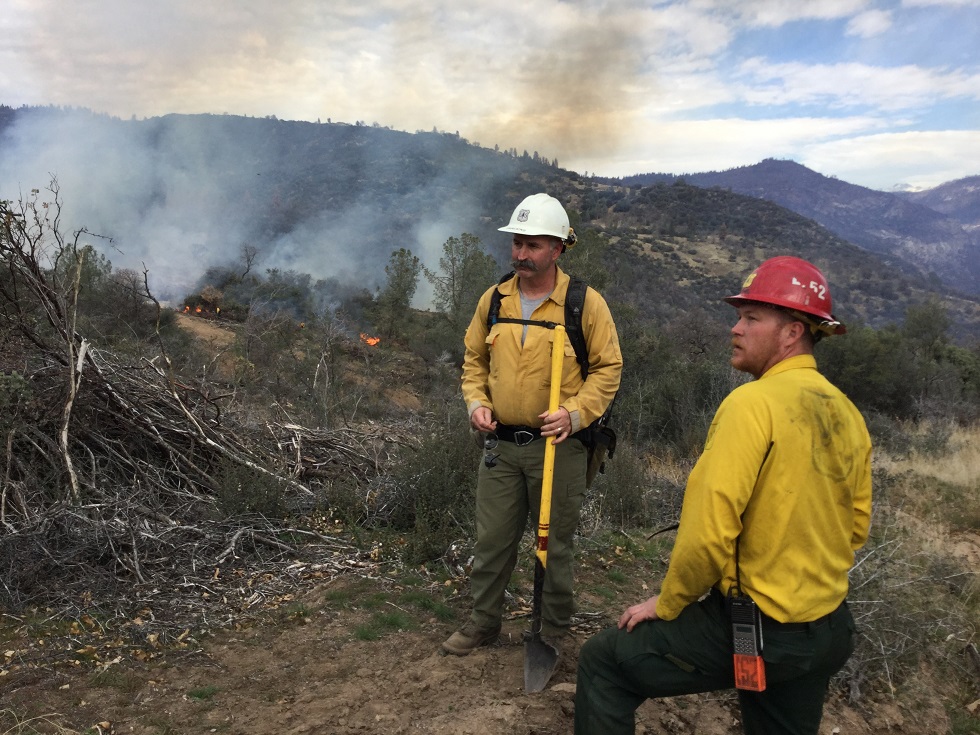 The flames diminished quickly as the conditions or prescription, as it is referred to in fire management, remained conducive to allow the fire to burn the areas cleanly and die down within a half hour of iginition.
The flames diminished quickly as the conditions or prescription, as it is referred to in fire management, remained conducive to allow the fire to burn the areas cleanly and die down within a half hour of iginition.
“This is the way it should go in a text book scenario, good consumption…not posing any holding issues, mundane in a good way,” offers Ritter Bethel, North Fork resident and Holding Boss for the burn.
Spot weather forecasts were taken on the hour and relayed to crews by Gloria Smith, Fuels Specialist assigned as Fire Effects Monitor, who started working in this job “because of the burning,” recalling years of past experience and assignments spent prepping for prescribed burns.
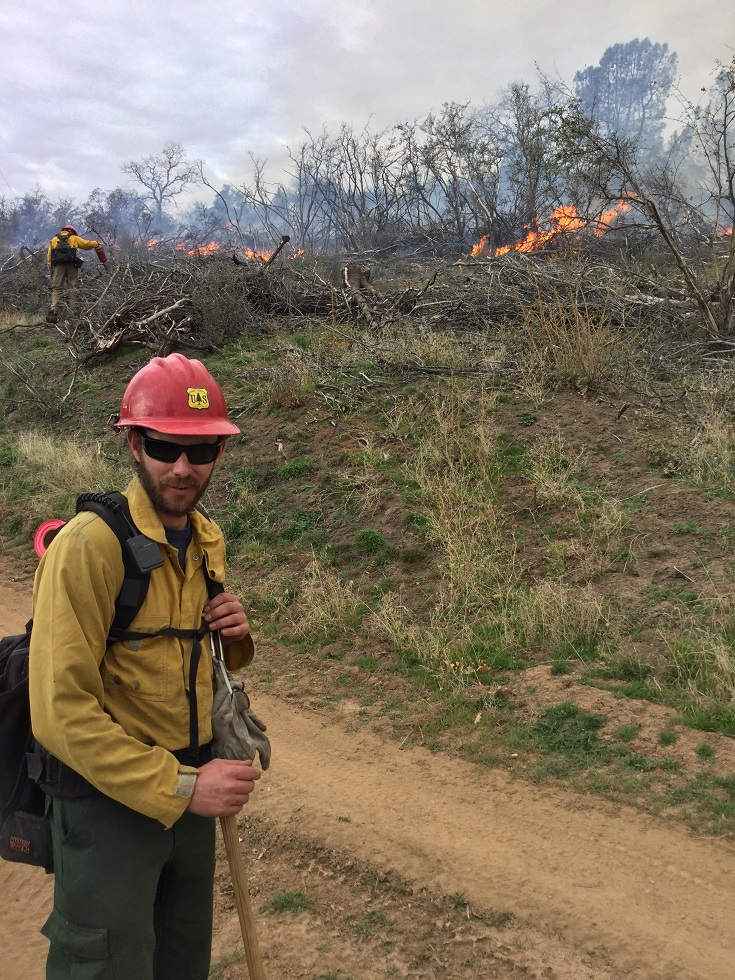 The project area has a history of indigenous burning prior to fire suppression policies established in 1910 when local Native Americans applied fire to manage and suppress vegetation and undergrowth leaving a more open landscape. These fires increased the wildlife forage in this winter range area and maintained culturally important plants in times past.
The project area has a history of indigenous burning prior to fire suppression policies established in 1910 when local Native Americans applied fire to manage and suppress vegetation and undergrowth leaving a more open landscape. These fires increased the wildlife forage in this winter range area and maintained culturally important plants in times past.
Reintroducing fire as a restoration tool to manage natural fuels and vegetation while preserving and enhancing high quality culturally used plants and foodstuffs, including basket making materials, for local Native Americans is an important goal of this project.
Moreno notes that “Native people burned this time of year and it was not uncommon to see a herd of 80-100 deer in a herd. This is a good thing and is why I like to be involved with these projects. On a large scale fire does a big clean up.”
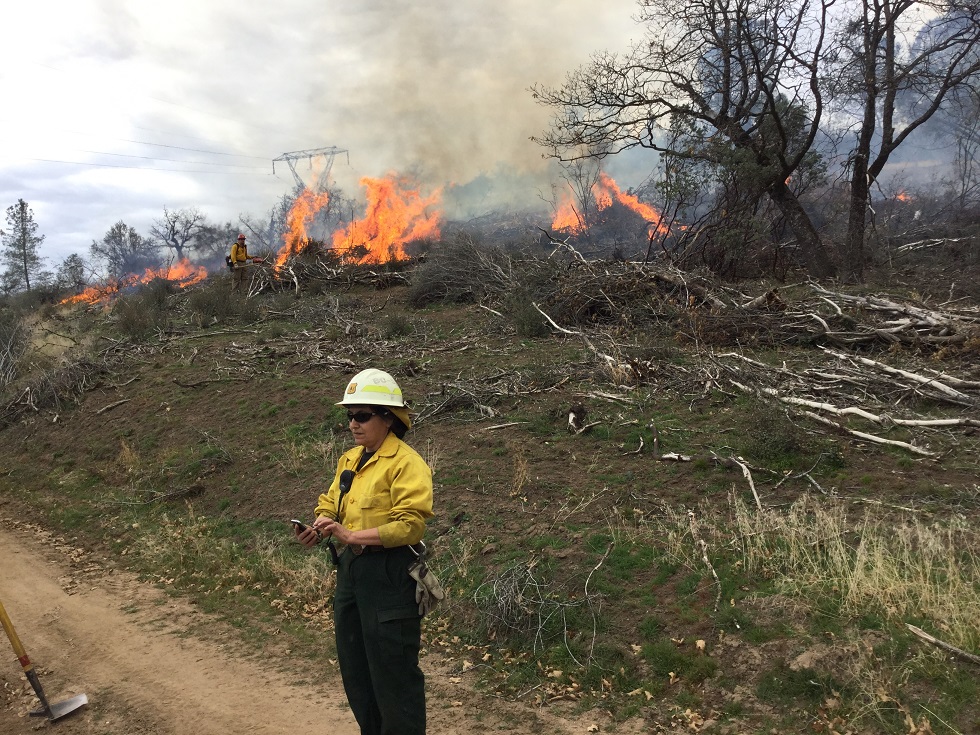 The project encompasses over 8,000 acres with 2,400 acres of prescribed burning treatments.
The project encompasses over 8,000 acres with 2,400 acres of prescribed burning treatments.
For questions or further information regarding the Source Kinsman Fuels Project, please contact Burt Stalter, Fuels Specialist, Bass Lake Ranger District, Sierra National Forest District at (559) 877-2218 extension 3208.
For more information on the National Wild Turkey Foundation please visit: http://www.nwtf.org
For more information on the California Deer Association please visit: http://www.caldeer.org
To “Like” the official Sierra National Forest Facebook page go to: http://www.facebook.com/SierraNF
Follow the Sierra National Forest on Twitter: @sierra_nf
For more information on the Sierra National Forest please visit: www.fs.usda.gov/sierra

